This applies to normal road vehicles, specifically adapted tracking vehicles and others such as quad bikes and golf buggies.
This can also include the use of specialist vehicles for sports coverage for example, motorbikes, quad bikes, golf buggies or other similar modes of transport at an event.
What Can Go Wrong?
- Injury to crew, presenters or other workers.
- Injury to members of the public/onlookers
- Inability to communicate between presenters/crews.
- Accident at high speed (race speeds on motor racing circuits and maximum speeds on public roads).
- In car camera/recording equipment could injure passengers.
- Distracting other road users.
Legal/麻豆社 Requirements
- A specific risk assessment will be required before the production activity takes place.
- Highway Code and Road Traffic legislation to be adhered to at all times.
- Check that the driver holds appropriate licence and are competent and confident in driving the type of vehicle under the circumstances.
- Make sure each driver has a valid Driver鈥檚 Declaration.
- Buggies MUST never be operated on a public road unless specifically licensed to do so. (NOTE: buggies are not normally licensed for road use).
- Ensure appropriate insurance is in place.
Control Measures
General Controls
- Comply with Road Traffic legislation if recording on a public road, otherwise use a private road.
- Ensure vehicle fit for purpose, roadworthy, suitably maintained and fully insured. If vehicle is hired, ensure provider knows what vehicle is being used for.
- Ensure driver/rider is experienced and competent for the specific activity, vehicle and intended conditions.
- Ensure driver(s) are familiar with route. Provide lead vehicle to be followed if necessary. Agree route and positioning when tracking another vehicle.
- Arrange effective communications between all parties (walkie talkies, second person in vehicles).
- Ensure occupants are properly seated & restrained with seat belts.
- Choose quiet location, low speed limit roads and suitable time of day.
- Ensure that where possible, other road users are not distracted by your activities ie, rubber necking.
- Tell the driver the content of the questions upfront and give opportunity to rehearse. Make sure driver is not then distracted by interviewer/Director or by mini-cams.
- Do not film in the road unless the area is cordoned off by emergency services.
- Wear high visibility jackets where practicable, available from Safety Equipment Stores.
- Park safely and avoid dazzling other road users with lights
Cameras, filming and tracking equipment
- Ensure camera or other equipment doesn鈥檛 block view of driver.
- Do not use exterior door or bonnet mounted equipment on an uncontrolled public road.
- Ensure mini cams in car are not located in a position that may cause injury to the driver or occupants in the event of an accident.
- When cameraman is filming from the passenger seat, any airbags for that position should be turned 'off' and all made aware of this reduced level of protection. Make sure the airbags are reinstated on completion of filming. The camera should be held in the lap, and the video assist screen used rather than the cameraman having to twist to use the eyepiece.
- Don鈥檛 shoot through sunroofs.
- Secure camera & kit i.e. by using a camera strap attached to the seat belt or suitable lanyard.
- Select and manage a competent reputable suitably experienced specialist contractor for vehicle filming.
- Obtain a risk assessment from the contractor and check that it covers expected hazards (referred to in this guide).
- Use A Frame/Low Loader vehicles from a reputable outfit where extensive dialogue or action is required.
- Use a specially modified vehicle or one with a split tailgate rear access, i.e. Range Rover when tracking. Only window section to be open (secured and clamped). Low speeds and short periods.
- If tracking from rear of a Range Rover type vehicle, secure camera and harness camera operator.
- If tracking on public roads, must inform the local police.
- Some Police authorities may allow the use of roof mounted cameras. Please speak to the Police before moving forward on this idea
Other types of vehicles
- If filming from back of motorbike, ensure driver competent and experienced and bike is set up for this type of filming eg, rear foot rests etc.
- If using a quad bike, must wear a crash helmet, be experienced in its usage and ideally use a engine cut-out system.
- Provide and maintain a register of authorised drivers to operate golf or similar buggies.
- Only authorise buggy operators who are 23 or over; hold a valid DVLA or equivalent and are experienced (or have been instructed by a nominated person on site) on how to safely operate the buggy for the terrain concerned, including how to avoid overturns.
- Inform buggy operators of site rules for speed, safe routes, refuelling, buggy capacity etc. Authorised operators should sign to confirm receipt and understanding.
- Prevent unauthorised use of buggies, eg require keys to be removed and returned to authorised holder.
- All buggy passengers should be seated with arms and legs within the cart.
- Ensure all vehicles suitably maintained.
- Quad bikes are not designed for road use and are usually used for tracking whilst filming off road.
Division Specific Issues
- No division specific issues.
FAQs/Did You Know?
- A driver (including talent) with 6 Points or more on their licence may mean they cannot be insured
- Certain police forces have a dedicated Film Unit who can assist with road closures and permissions
- The driver should not look away from the road any longer than they would do so to check mirrors & instruments & should keep their hands on the steering wheel & avoid excessive gesticulation
- Only the Police or Traffic Management Contractor can direct traffic
- Filming out of a window is permitted as long as the camera does not protrude further than the overall width of the vehicle, i.e. up to the edge of the wing mirror.
- Golf buggies are usually silent, so pedestrians are often unaware of their presence.
- There is a history of serious accidents associated with golf type buggies and quad bikes, which is why the 麻豆社 insists on making sure they are only used by authorised operators who are properly instructed/experienced in their usage.
Recommended links
-
[Gateway]
-
-
-
-
-
Document download
-
-
-
Vehicle topics
-
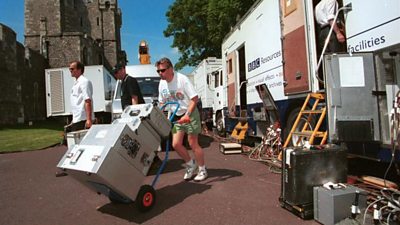
Broadcast Vehicles
A guide to satellite vehicles, radio cars and uplink vehicles -
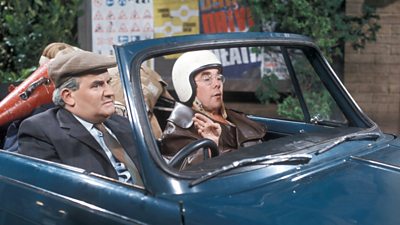
Driving & Cycling for Work
Our safety guideline to driving safely and legally on the public highway for the purposes of 麻豆社 work. -
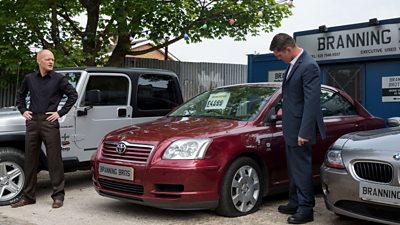
Safety Short: Vehicle checks
麻豆社 Safety's Safety Short on Vehicle Safety Checks. -
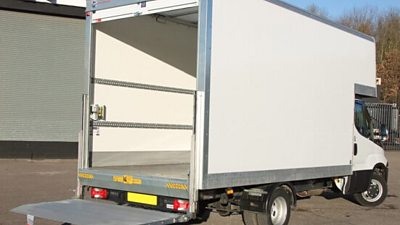
Tail Lifts
麻豆社 Standard and Guidance on the safe use of vehicle tail lifts -
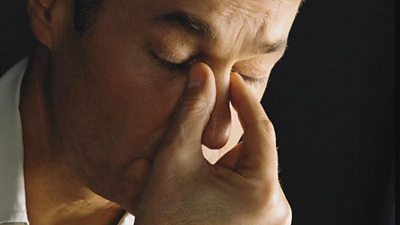
Tiredness and Fatigue
A guide to the scheduling and management of your team鈥檚 working hours. -
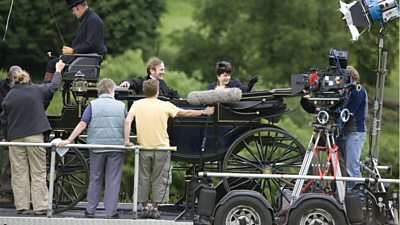
Vehicles: Recording in, from and around
A guide to recording a driver or passengers from within a moving vehicle. -
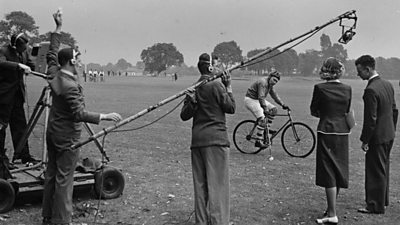
Vehicles Used in Sports Coverage
A guide to the safe use and provision of vehicles used in sports coverage, including quad bikes and golf buggies. -

Winter conditions - driving and location safety
This safety guidance covers the additional risks to driving during harsh winter conditions in the UK.
More from SSR
-
Your platform to record accidents, risk assessments, assurance monitoring and inspections
-
Safety Equipment Stores
Just one number to call: 020 3614 5155 -
麻豆社 Safety Guidelines
An A-Z of 麻豆社's Health and Safety Guidelines -
Safety Advice Line: 0370 411 0464 Email: safety@bbc.co.uk
Events guidance - key links:
- Exhibitions
- General Guidance
- Indoor Location Recce Checklist
- Outdoor Location Recce Checklist
- Major Incidents & Emergency Planning
- Marketing and Promotional
- Noise Exposure
- Planning and Management
- Responsibilities
- Responsibilities Form
- Laser Lighting Effects
- Strobe Lighting
- Temporary Stages and Rostra
Health topics - key links:
- (麻豆社 network only)
- Contributors Fitness to Participate
- Display Screen Equipment (DSE)
- (麻豆社 network only)
- First Aid and Welfare on Location
- International Travel - Risks & Health
- Manual Handling
- Mental Health: Homepage
- (麻豆社 network only)
- Personal Health and Wellbeing
- Pregnancy
- Psychological Trauma Support & Trauma Risk Management (TRiM)
- Tiredness and Fatigue
- Travel Health Contacts
麻豆社 High Risk - key links:
- CBRN and Industrial Spills
- Covert Filming
- Crisis Management and Security Support
- Demonstrations, Protests and Crowds
- Disaster Coverage
- Door Stepping
- (麻豆社 network only)
- (麻豆社 network only)
- Public Order
- Safety Equipment Stores
麻豆社 Journalism - key links:
麻豆社 Productions - key links:
- Aerial Filming and Airfields
- Animals: Displaying and handling for performance
- Boats: Working on
- Children and Young People
- Driving
- Electrical Equipment and Systems
- First Aid and Welfare on Location
- Food Safety (Cooking and Catering)
- Remote Location Working
- Roads and Streets: Working by
- Security of Productions on Location
- Stunts
- Tiredness and Fatigue
- Unmanned Aerial Systems (UAS aka Drones)
- Vehicles: Recording in, from and around
- Working at Height: Mobile Elevating Work Platforms
- Working at Height: Tower Scaffolds
麻豆社 Radio - key links:
- (麻豆社 Network only)
麻豆社 Security - key links:
麻豆社 Sport - key links:
About this site
This site describes what the 麻豆社 does in relation to managing its health, safety and security risks and is intended for those who work directly for the 麻豆社.
It is not intended to provide instruction or guidance on how third parties should manage their risks. The 麻豆社 cannot be held liable for how this information is interpreted or used by third parties, nor provide any assurance that adopting it would provide any measure of legal compliance. More information
Some links on this site are only accessible when connected to the 麻豆社 network
